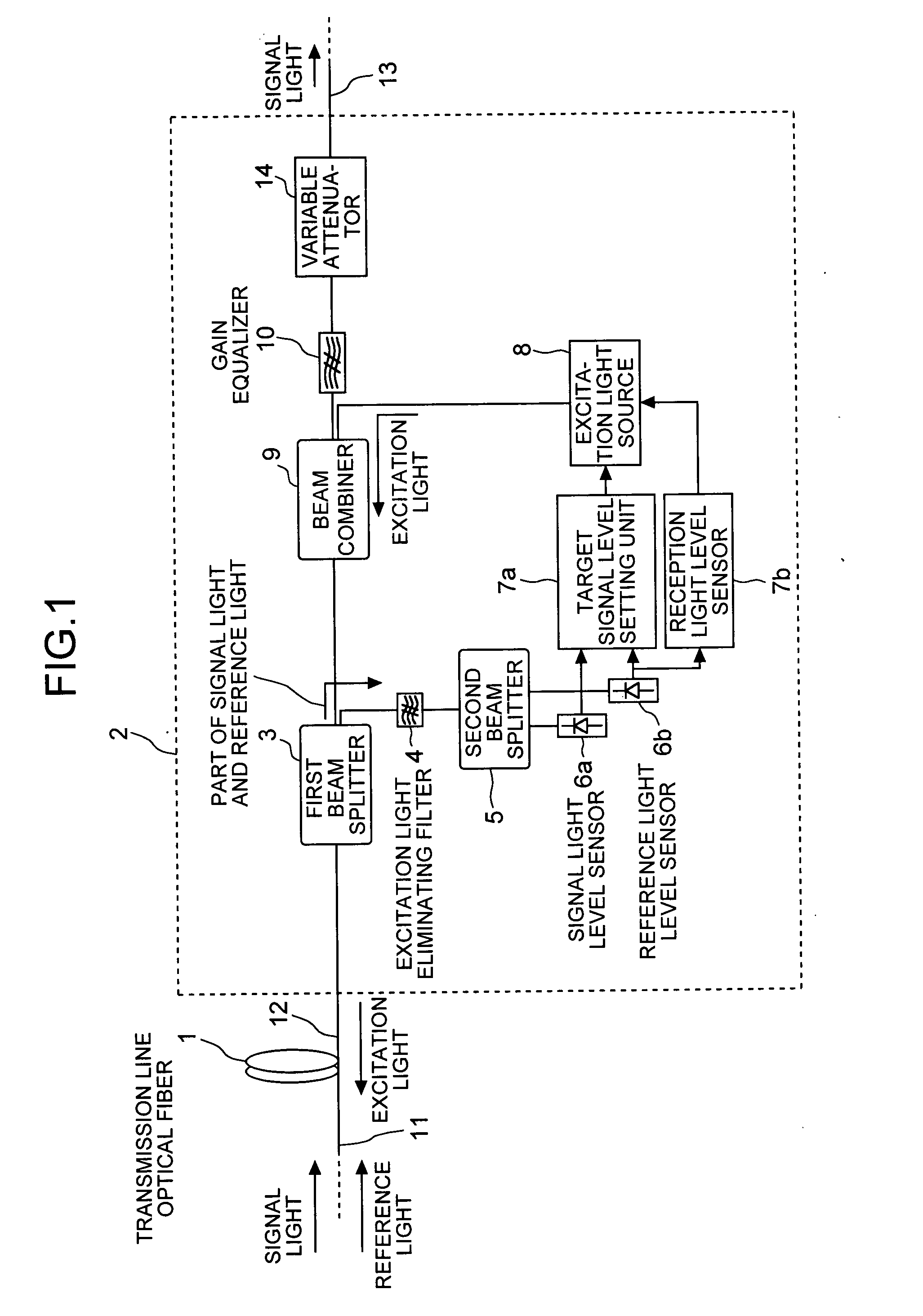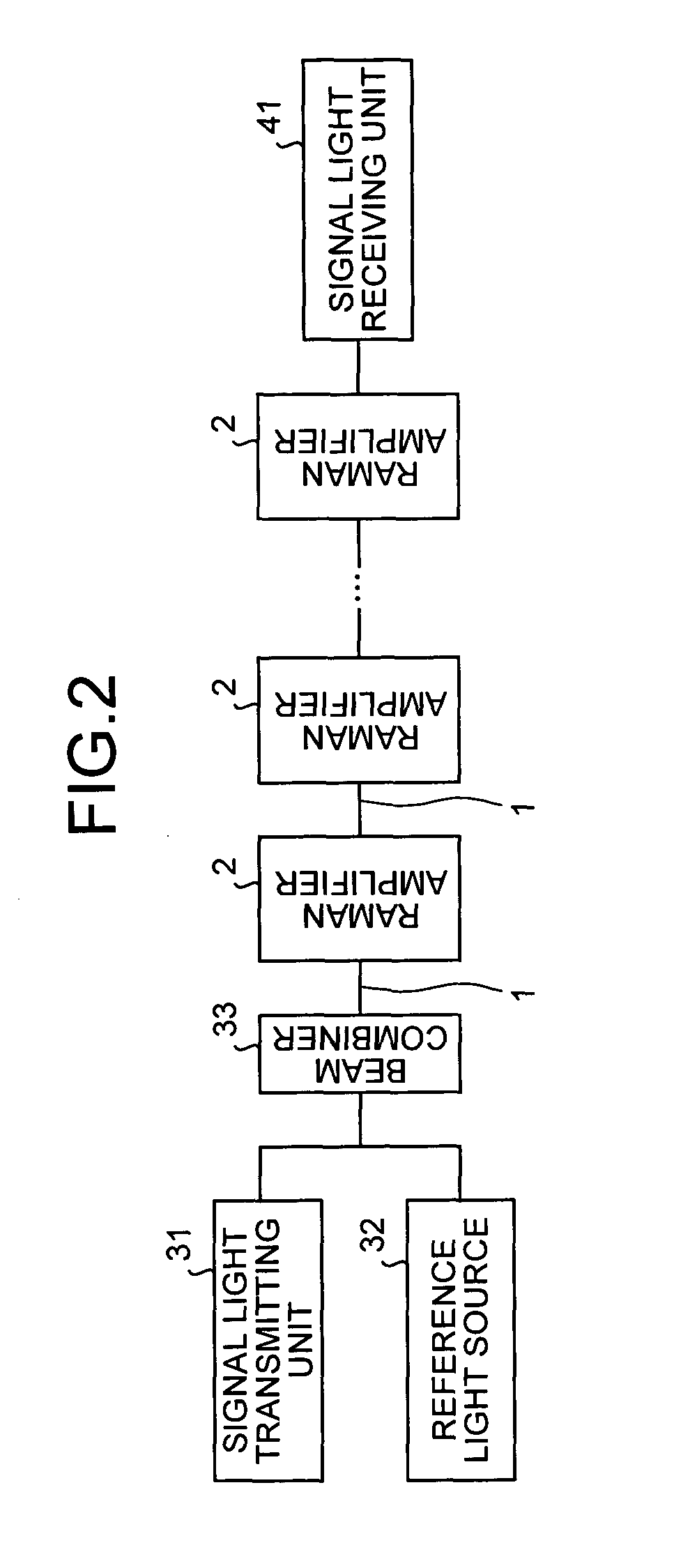Raman amplifier and optical relay transmission system
- Summary
- Abstract
- Description
- Claims
- Application Information
AI Technical Summary
Benefits of technology
Problems solved by technology
Method used
Image
Examples
first embodiment
[0021]FIG. 1 is a block diagram of a Raman amplifier according to the present invention. The Raman amplifier 2 is a transmission line through which a signal light that is multiplexed with a signal light of 1580 nm wavelength and a reference light of 1510 nm wavelength is propagated. A transmission line optical fiber 1, which achieves the Raman amplification effect when an excitation light is input, is connected to the input end of the Raman amplifier 2. An optical fiber 13, which outputs the Raman-amplified signal light, is connected to the output end of the Raman amplifier 2.
[0022] The Raman amplifier 2 includes an excitation light source 8 that emits the excitation light of a wavelength required for the Raman amplification of the signal light of 1580 nm wavelength propagated through the transmission line optical fiber 1, and a beam combiner 9 that combines plural excitation lights from the excitation light source 8. The excitation light source 8 includes a laser oscillator such as...
second embodiment
[0048] in addition to the amplifier in the constant gain EDFA 15 that is conventionally employed as the optical relay transmission system, the optical relay transmission system further includes the Raman amplifier. Consequently, even when the gain efficiency of the transmission line optical fiber 1 varies or when the loss of the excitation light along the connection path of the transmission line optical fiber 1 varies, the desired Raman gain can be achieved by appropriately adjusting the output power of the excitation light source 8. Along with enhancing the transmission distance of the amplified signal light, the signal light can be further amplified while suppressing the loss and maintaining the gain at a constant level.
[0049] According to the first and second embodiments, the excitation light from the excitation light source 8 is propagated in the direction opposite to that of the signal light. However even when the excitation light is propagated in the same direction as that of...
PUM
 Login to View More
Login to View More Abstract
Description
Claims
Application Information
 Login to View More
Login to View More - R&D
- Intellectual Property
- Life Sciences
- Materials
- Tech Scout
- Unparalleled Data Quality
- Higher Quality Content
- 60% Fewer Hallucinations
Browse by: Latest US Patents, China's latest patents, Technical Efficacy Thesaurus, Application Domain, Technology Topic, Popular Technical Reports.
© 2025 PatSnap. All rights reserved.Legal|Privacy policy|Modern Slavery Act Transparency Statement|Sitemap|About US| Contact US: help@patsnap.com



